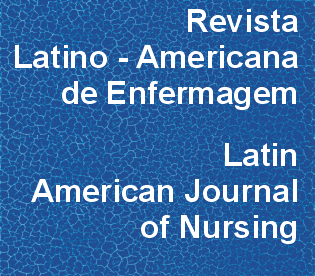Detecção do papilomavírus humano em citologias cervicais de mulheres atendidas no Programa Saúde da Família
DOI:
https://doi.org/10.1590/0104-1169.3189.2398Resumo
OBJETIVOS: identificar a prevalência do papilomavírus humano, os fatores de risco associados e a distribuição dos genótipos nas mulheres referenciadas para rastreamento do câncer cervical, durante o atendimento no Programa de Saúde da Família. MÉTODO: foi realizado levantamento de corte transversal com 351 mulheres. A amplificação do DNA por reação da cadeia da polimerase e a análise do polimorfismo de fragmentos de restrição foram aplicadas para detectar e tipificar o papilomavírus. RESULTADOS: a infecção pelo vírus foi detectada em 8,8% das amostras. Entre os 21 genótipos diferentes identificados neste estudo, 14 foram de alto risco para o câncer cervical, e o tipo 16 foi o mais prevalente. A infecção foi associada a mulheres com parceiros sexuais diversos. Os tipos de baixo risco foram associados com mulheres mais novas, enquanto o grupo de alto risco foi vinculado a alterações citológicas. CONCLUSÃO: nesta amostra, atendida por um Programa de Saúde da Família, encontraram-se níveis baixos de infecção pelo papilomavírus. Foi detectada, também, associação entre a frequência do vírus e o comportamento sexual. Porém, a grande variedade de genótipos detectados merece atenção relacionada à cobertura vacinal, que abrange somente tipos prevalentes de HPV.Downloads
Downloads
Publicado
2014-01-01
Edição
Seção
Artigos Originais
Licença
Os direitos autorais são de propriedade exclusiva da revista, transferidos por meio da Declaração de Transferência de Direitos Autorais (presente no Formulário Individual de Declarações) assinada pelos autores. Para a utilização dos artigos, a RLAE adota a Licença Creative Commons, CC BY-NC Atribuição não comercial (resumo ou código completo da licença). Com essa licença é permitido acessar, baixar (download), copiar, imprimir, compartilhar, reutilizar e distribuir os artigos, desde que para uso não comercial e com a citação da fonte, conferindo os devidos créditos autorais a Revista Latino-Americana de Enfermagem. Nesses casos, nenhuma permissão é necessária por parte dos autores ou dos editores.Como Citar
Detecção do papilomavírus humano em citologias cervicais de mulheres atendidas no Programa Saúde da Família . (2014). Revista Latino-Americana De Enfermagem, 22(1), 100-107. https://doi.org/10.1590/0104-1169.3189.2398



